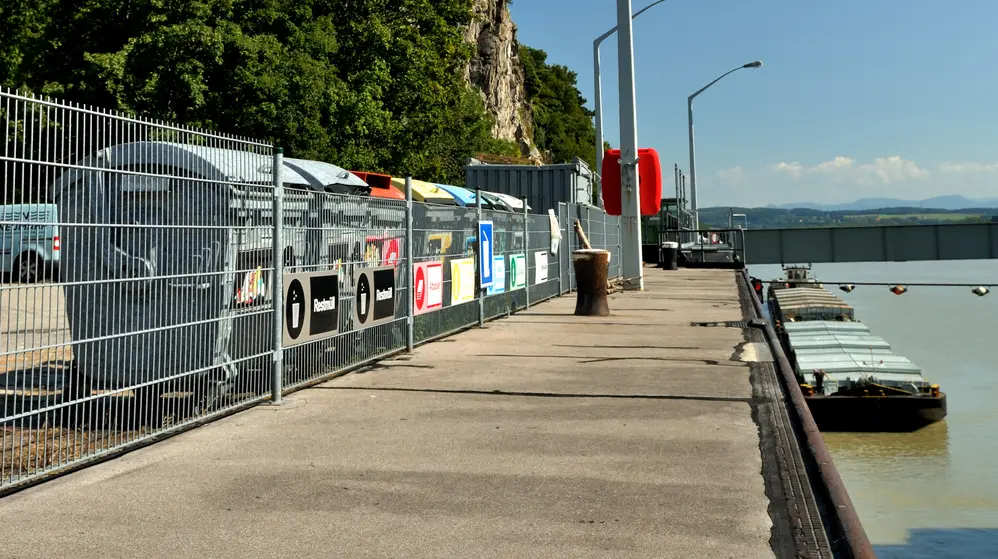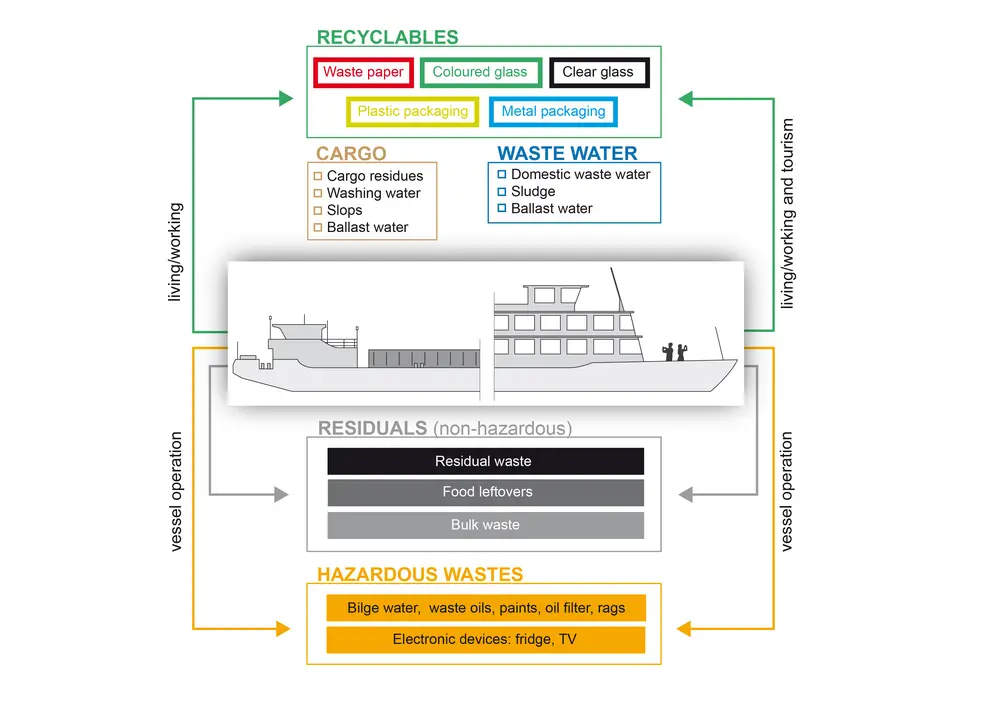State of the Art Ship Waste Management – an important step towards environmental protection!
Inland navigation is an environmentally friendly and promising transport mode. However waste that is generated due to ship operation and life on board needs to be disposed of properly. If ship waste is not treated and disposed of correctly, precious ecosystems and essential natural resources are threatened.
Characteristic for ship waste is the fact that many different types occur in a relatively small area. Waste can arise from the operation and maintenance of the vessel (especially oily and greasy waste from engines), the people on-board or related to the cargo. Furthermore hazardous wastes (e.g. bilge water, paints and varnish) also originate on board. Besides liquid and solid waste, also CO2 and other gases are emitted by the vessels engines.
Depending whether it is a cargo or a passenger vessel, amounts and composition of produced waste significantly differ. While cargo vessels are normally operated by only a few people, internationally cruising cabin vessels can carry several hundred people. Subsequently, the amounts of domestic waste waters, sewage and domestic refuse can be exceptionally higher.
Proper waste disposal reduces the risk of damage to the river ecosystem and protects essential natural resources. viadonau is involved in the conception and implementation of national and international projects in the field of ship-waste management, as well as the development and coordination of existing systems in the Danube Region.
In addition, waste disposal points for 'household waste' generated by cargo vessels are available free of charge at the locks of Abwinden, Persenbeug and Greifenstein. For detailed information on waste disposal facilities in Austria, please see the DORIS Website.
More information on 'ship waste management' is also available on the online learning platform Ines Danube, which has been integrated into the CO-WANDA project as a e-learning course.


